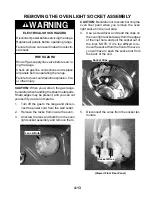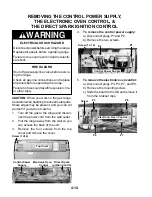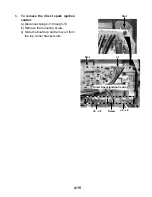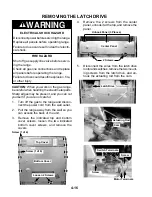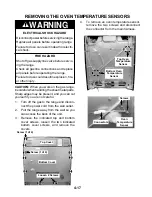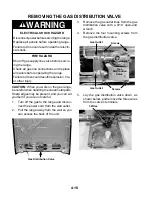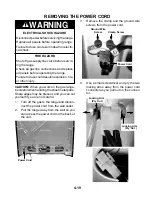
5-1
COMPONENT TESTING
Before testing any of the components, perform
the following checks:
• The most common cause for control failure is
corrosion on connectors. Therefore, discon-
necting and reconnecting wires will be nec-
essary throughout test procedures.
• All tests/checks should be made with a VOM
or DVM having a sensitivity of 20,000 ohms-
per-volt DC, or greater.
• Check all connections before replacing com-
ponents, looking for broken or loose wires,
failed terminals, or wires not pressed into
connectors far enough.
• Resistance checks must be made with power
cord unplugged from outlet, and with wiring
harness or connectors disconnected.
ELECTRICAL SHOCK HAZARD
Disconnect power before servicing.
Replace all panels before operating.
Failure to do so could result in death or
electrical shock.
WARNING
IGNITION SWITCHES
Refer to page 4-4 for the procedure for servic-
ing the ignition switches.
1.
Disconnect the electrical power to the
range.
2.
Pull the range away from the wall and
remove the top rear cover.
3.
At the back of the control panel near the
direct spark ignition control, disconnect
the ignition wires from the main harness
connectors.
Ignition Switch Connectors
4.
Clip the ohmmeter leads to the ignition
switch connectors.
5.
Set the ohmmeter to the R x 1 scale.
6.
With all of the control knobs in the OFF
position, the meter should indicate an open
circuit (infinite).
7.
Turn one of the control knobs to the IG-
NITE position. The meter should indicate
continuity.
8.
Repeat step 7 for the rest of the switches.
NOTE: If an ignition switch is defective, you will
have to replace all of the ignition switches,
since they are supplied as an assembly.

